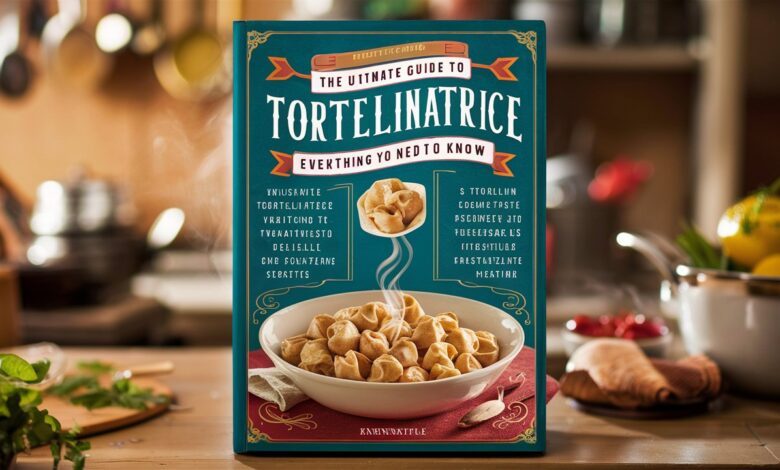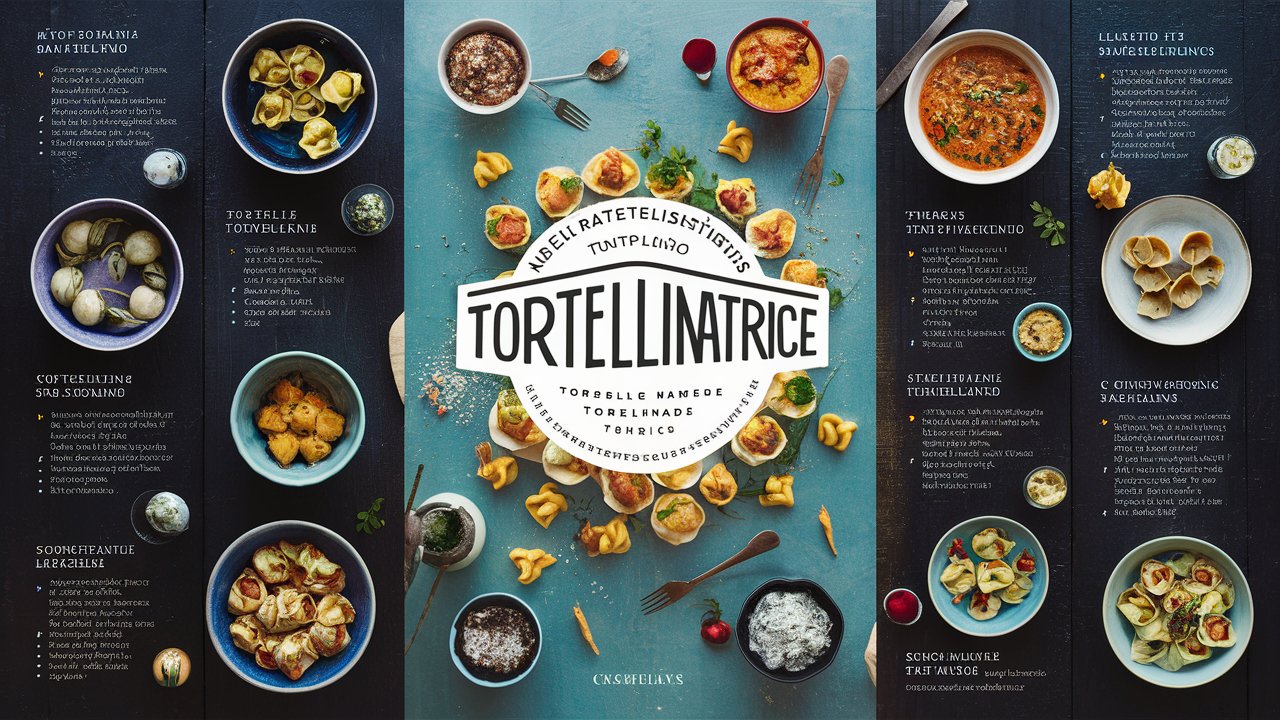The Ultimate Guide to Tortellinatrice: Everything You Need to Know

When it comes to the art of making pasta, one essential tool that consistently stands out is the tortellinatrice. This specialized machine has become a must-have for professional kitchens, artisan pasta makers, and even passionate home cooks who want to master the authentic preparation of tortellini. With roots in Italian culinary tradition, the tortellinatrice combines precision, efficiency, and authenticity, making it an indispensable addition for anyone serious about pasta-making.
In this comprehensive guide, we will explore the history, functionality, benefits, and buying tips for the tortellinatrice, while also diving deep into why this machine is considered the gold standard in pasta craftsmanship.
What is a Tortellinatrice?
The tortellinatrice is a specialized pasta machine designed exclusively to produce tortellini, the iconic stuffed pasta originating from the Emilia-Romagna region of Italy. Unlike generic pasta machines, which typically roll sheets or cut shapes, the tortellinatrice focuses on the precise folding and sealing of tortellini, ensuring uniformity in both shape and size. This precision is crucial for maintaining the authentic look, texture, and cooking quality of traditional tortellini.
Modern tortellinatrice models are available in both manual and automatic versions, with some advanced commercial models capable of producing thousands of pieces per hour. Despite its efficiency, the machine is designed to replicate the same delicate folding technique that Italian nonnas have been perfecting for centuries.
The History and Tradition Behind Tortellini
To understand the importance of the tortellinatrice, it is essential to revisit the history of tortellini itself. According to Italian legend, tortellini were inspired by the navel of Venus, the goddess of love. Originating in the Emilia-Romagna region, particularly in Bologna and Modena, tortellini became a symbol of Italian culinary identity. Traditionally, they are stuffed with a mixture of meats, cheese, and spices, then folded into their iconic ring-like shape.
As the demand for tortellini grew, pasta makers sought ways to maintain traditional quality while increasing production capacity. This necessity gave rise to the tortellinatrice, a machine that combined craftsmanship with modern technology to ensure consistency without sacrificing authenticity.
How Does a Tortellinatrice Work?
A tortellinatrice machine operates in several stages, each designed to mimic the artisanal process of hand-making tortellini:
-
Sheet Preparation – The machine feeds pre-rolled pasta sheets into the system.
-
Filling Insertion – A controlled mechanism places the exact amount of filling onto the pasta sheets, ensuring uniform taste and texture.
-
Cutting and Folding – The machine cuts precise shapes and folds the pasta into the classic tortellini form.
-
Sealing – The edges are sealed tightly, preventing the filling from leaking during cooking.
This process ensures each tortellino has the same size, thickness, and balance between pasta and filling, which is essential for both taste and presentation.
Benefits of Using a Tortellinatrice
Investing in a tortellinatrice offers numerous advantages, both for commercial pasta producers and for culinary enthusiasts.
-
Efficiency and Speed – While hand-making tortellini can take hours, the machine produces hundreds in minutes without compromising quality.
-
Consistency in Quality – Every tortellino has the same size, thickness, and filling ratio, ensuring uniform cooking results.
-
Preservation of Tradition – The machine replicates authentic Italian techniques, allowing chefs worldwide to serve tortellini with true cultural authenticity.
-
Scalability for Businesses – Restaurants and pasta shops can meet high demand without sacrificing artisanal quality.
-
Reduction of Human Error – Eliminates inconsistencies that often occur with manual preparation.
Types of Tortellinatrice Machines
There are various types of tortellinatrice machines available, each catering to different needs and production scales:
1. Manual Tortellinatrice
Designed for small-scale or home use, these machines require manual effort but allow the user to control every aspect of the process. They are ideal for passionate home cooks or boutique pasta makers producing small batches.
2. Semi-Automatic Tortellinatrice
A perfect balance between tradition and efficiency, semi-automatic models handle the filling and folding process but still require operator supervision. They are commonly used in artisan pasta shops and small restaurants.
3. Fully Automatic Tortellinatrice
Built for large-scale pasta production, these advanced machines automate the entire process—from sheet feeding to cutting, filling, folding, and sealing. They can produce thousands of tortellini per hour, making them essential for factories and industrial pasta manufacturers.

How to Choose the Right Tortellinatrice
When selecting the ideal tortellinatrice, there are several important factors to consider:
-
Production Needs – Choose between manual, semi-automatic, or fully automatic based on your scale of production.
-
Material Quality – Opt for machines made from durable stainless steel for longevity and easy cleaning.
-
Ease of Maintenance – Select models that allow simple disassembly for cleaning and repairs.
-
Precision in Filling – Look for machines with advanced filling systems to ensure even distribution of ingredients.
-
Budget and Investment – While manual machines are more affordable, commercial models require a higher investment but deliver faster returns through efficiency.
Maintenance and Care for Your Tortellinatrice
Proper care is essential to extend the lifespan of your tortellinatrice and maintain its efficiency. Regular maintenance includes:
-
Cleaning pasta sheets and filling residue after each use.
-
Lubricating moving parts to prevent mechanical wear.
-
Inspecting blades and rollers for sharpness and alignment.
-
Following manufacturer guidelines for servicing and parts replacement.
With proper care, a high-quality tortellinatrice can last for many years, delivering consistent results and exceptional pasta quality.
The Future of Pasta-Making with Tortellinatrice
As global demand for authentic Italian cuisine continues to rise, the tortellinatrice is expected to play an even greater role in pasta-making. Innovations are already underway, with machines incorporating smart technology, digital controls, and eco-friendly designs to reduce waste and energy consumption. These advancements ensure that while pasta-making becomes more efficient, the timeless authenticity of Italian tradition remains preserved.
Conclusion
The tortellinatrice is more than just a machine—it is a bridge between centuries-old Italian tradition and modern culinary innovation. Whether for professional chefs, restaurant owners, or dedicated home cooks, this machine ensures that the beauty, flavor, and authenticity of tortellini are never compromised. By embracing this technology, pasta makers can achieve unmatched consistency, efficiency, and authenticity in their craft.
FAQ about Tortellinatrice
Q1: Can I use a tortellinatrice at home?
Yes, smaller manual or semi-automatic versions are perfect for passionate home cooks.
Q2: How much does a tortellinatrice cost?
Prices vary widely, from a few hundred dollars for manual models to several thousand for industrial machines.
Q3: Does the machine affect the taste of tortellini?
No, the machine maintains traditional taste by replicating hand-folding techniques with precision.
Q4: Can it make other pasta shapes?
Some advanced models allow attachments for different filled pasta types like ravioli or cappelletti.
Q5: How long does a tortellinatrice last?
With proper care and maintenance, a high-quality machine can last for decades.



